Five Tips to Help Your Children Practice
Parents play a big role in helping their children practice their musical instruments. Use these five tips to make music practice time easier.
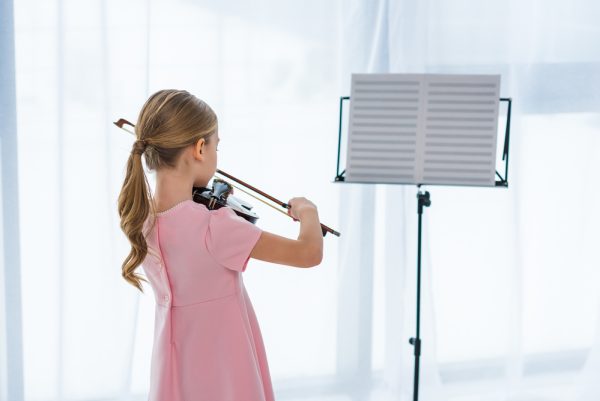
In our household, music takes a high priority. Not only does it make our living for us, it is what makes life worthwhile (in our humble musician opinions). Because we have deemed music to be so important, our three children each play an instrument. The instrument is negotiable, but whether or not they play one isn’t.
While it would be fun to see all of the girls follow in our footsteps and go on to study music in college, there are so many more reasons than that for studying music as young people. The self-discipline and confidence gained, the friendships made, the development of talent, and the expansion of one’s universe are so important that I (almost) wouldn’t care if my children didn’t pick up their instruments again once they leave home.
But they are home right now, and they are playing instruments, and it is my job to see that they practice. And sometimes that job is just plain hard.
My oldest daughter, now 13, has been playing the violin since she was 3 years old. Which means I have ten years of being a “music practice mom” under my belt, though I am by no means an expert. I have learned a few really helpful tips and tricks in these years, but I don’t always remember to utilize them myself, and practice sessions all too often end in frustration and tears. This post is as much a reminder to me as I hope it is helpful to you.
2023 update: Ten years later, that daughter is 23 years old. While she didn’t major in music in college, she did play in her university orchestra and still utilizes her skills as a violinist often.
How to help your child practice a musical instrument
1. Know what time of day works best for your child to practice.
In general, people seem to have their children practice sometime in the afternoon after school. Which is fine if your child does well at that time—but not all children do.
When my oldest daughter was a lot younger, that is when she practiced and it almost always ended in a meltdown. After school is simply not a good time for her; she is exhausted and needs to sit and rest at this time of day. She is, however, very cheerful in the mornings and always has been, so I decided to move her practice to before school and it made a huge difference. She willingly gets herself up every single morning at 6:00 am and practices scales and concertos before getting ready for the day and she does it happily. And even on the days where she gets up a little late, she gets much more done than she used to when she was practicing after school.
My middle daughter, on the other hand, would die if I made her practice before school. She is my night owl, and would actually prefer to do her piano practicing around midnight. Of course, I can’t let her do that on school nights, but I actually don’t mind if she chooses to do that on weekends or during the summer. On school nights, she tends to practice right before bed, and that works really well for her.
My youngest daughter is currently practicing after school, but it really isn’t the right time for her. I’m considering getting her up and ready at 6:30 or so, and then having her do her practice at 7:00 when her sister is finished. I personally am not thrilled about this idea because she is not to the point where she can practice on her own and that means I’ll have to get out of bed and help her. But, she is more of a morning person like her older sister and we’ve been having a lot of meltdowns in the afternoon when it comes to practicing. Or chores. Or anything, really. After school is clearly not a good time for this particular child.
If your child is having a lot of tantrums and tears during practice, the easiest fix might just be to find a different time to practice.
2. Practice at the same time every day.
It took me many years to see the value in this. Since my oldest daughter started playing the violin at such a young age, we were mostly unencumbered by schedules, so we practiced whenever we wanted to. I continued to approach practice in this manner as she got older and began to attend school and have more extracurricular activities, and I soon realized that if I didn’t make it a priority, violin practice got pushed out of the schedule all too often.
Finally, we decided when she would practice and that became a commitment. We weren’t (aren’t) perfect at always doing it, but it is much more likely to happen when it is on the schedule.
The time you choose should be a time that is usually free of other commitments. Obviously she gets her practice in pretty much 100% of the time because we never have anything going on at 6:00 am. My other two have a slightly harder time because things do tend to come up during the afternoon and evening, but we do our best to make practicing a priority and reschedule it if necessary.
3. Practice with your child.
You don’t have to play an instrument yourself to practice with your child. Just being there to help out and support your budding musician is vital to their growth—especially early on in the process. If you don’t play an instrument, sitting in on lessons and taking notes is helpful. Even if you can’t play or demonstrate for your child, you can help remind them of things the teacher said in lessons. Do some learning right along with your child—learn to read music if you don’t know how, for example. Your child will love that you are learning the same things they are, and they will delight in helping you learn. Which, as we all know, only helps them to learn more quickly.
If you do play an instrument, play with your child—even if it isn’t the same instrument. My youngest daughter loves it when I play the piano accompaniments to her violin songs and it helps her to learn them more quickly. I have a friend who plays the clarinet along with her violinist daughter.
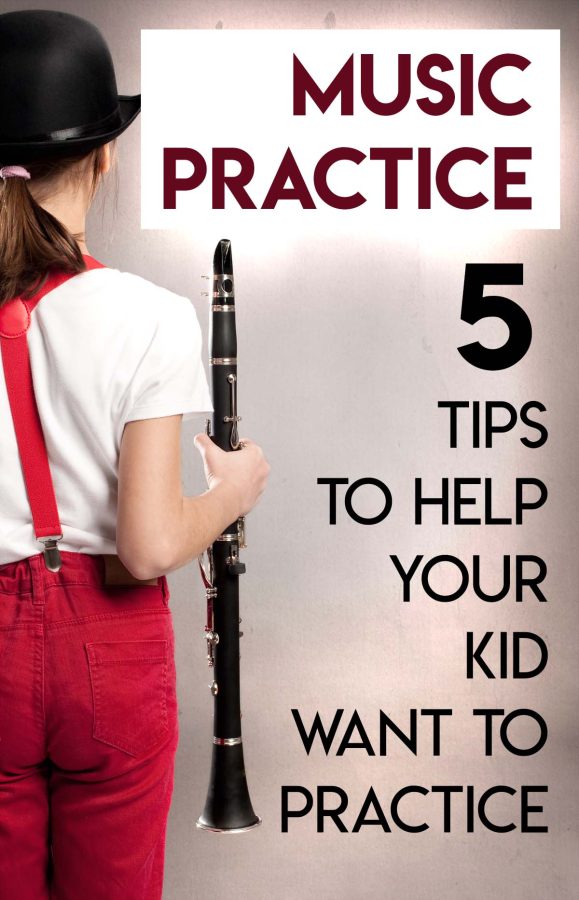
With my daughter who is learning piano, sometimes I will play the top hand while she focuses only on the bottom hand, or vice versa. Since I play the piano I can show her how something is supposed to go if she is having trouble with it. I can’t do that with the violin, but I have learned enough about the fingerings to very slowly model something if my youngest is having trouble. My oldest is way too advanced for my help with actual technique or note reading, but I can help her with things like musical terms she is unfamiliar with or musicality.
After a few years, you will not need to help as much, and your child will become much more independent with practice. My oldest daughter almost never needs our help anymore, but it took a lot of years sitting on my knees and helping her put her fingers down to get her to this place.
4. Focus on “times” not “time.”
One of my biggest mistakes as a parent was insisting that my children practice for a set amount of time each day. This often resulted in a lot of shoddy playing and wasting time. My middle daughter would play everything in the world but the things her teacher had assigned, my oldest would find every reason in the world to stop playing and fiddle with things, and my youngest would spend most of the time having a fit.
Now, I tell them they have to do each piece a certain number of times. For some reason, this seems easier to them, even if it might take longer in the end. They just changed their violin teacher last week, and I like how their new teacher writes on the practice log how many times per day to play each piece. She has obviously figured out this trick, too.
Now, when they are just beginning to learn a piece, you don’t really want to encourage your child to play it through five times when they can’t do it correctly. In those cases, focus on playing a particular measure or line a certain amount of times until they feel confident that they can play that section without mistakes, and then move on to the next section and do the same thing.
5. Make practice fun.
Even though practice is on my girls’ chore lists, and their allowance is tied to those very lists, I don’t want practice to seem like a chore. And I definitely DO make it seem like a chore for them most of the time. But sometimes I actually remember to make it fun—and when I do, I am always amazed by the results.
There are a million little games you can play, and little ones will find them very motivating. We sometimes roll a die to see how many times they have to play a certain song. I used to give my oldest one M&M for every repetition of a twinkle rhythm, and that was pretty darn fun and motivating for her. I have made card games that dictate what we will play, and often make up silly games on the fly as we are practicing.
A quick google will turn up many resources to help make practicing fun. I personally love the book Helping Parents Practice by Edmund Sprunger for ideas on making practice fun (plus a ton of great information on the whole psychology of practicing with your child). The greatest thing about making practice a game, is that your child is having so much fun that they forget they are learning something.
Another way to make practicing more fun, is to let your child choose some music to play in addition to what is assigned by their teacher. One of my daughters is obsessed with the band One Direction, and so I bought her a piano arrangement of her favorite song. I made sure to get it at the proper level, but she had that thing learned so fast I couldn’t believe it. Sometimes just having fun music to play is all it takes to get them to want to practice.
What are your best tips for getting your child to practice? I’d love to hear them!
This post contains affiliate links. For more information, please read my disclosure.

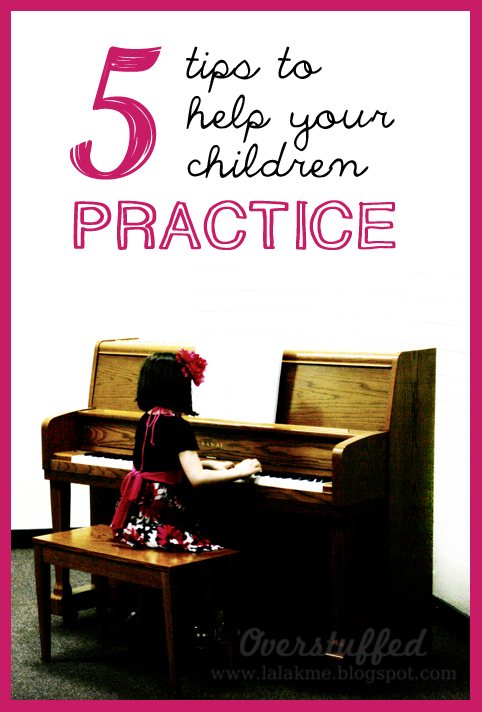
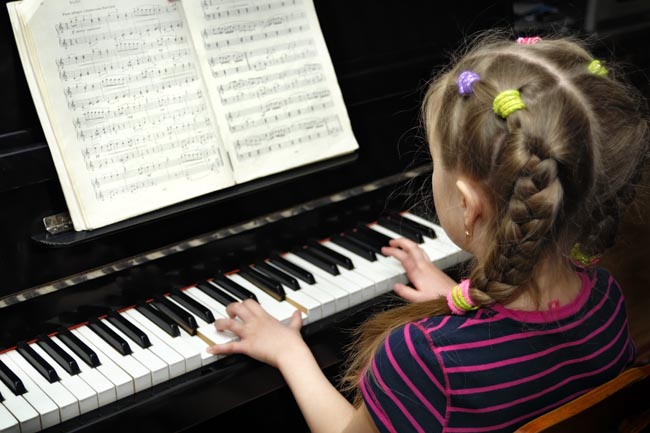

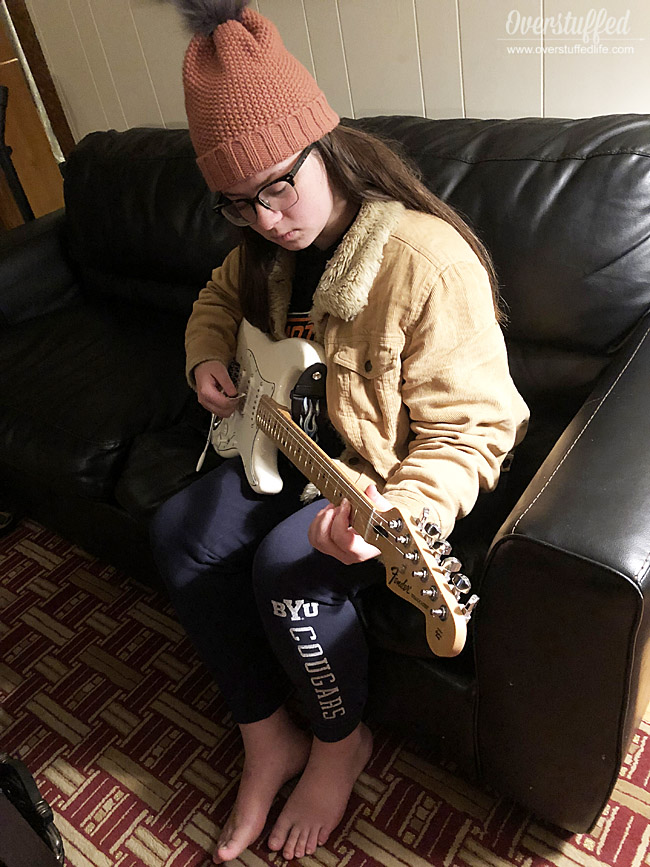
Those are all great suggestions! "Times" rather than "time" works well for my kids, too. You might like the (free printable) practice sheet we use to keep track of their "practice times." You can find it here – flandersfamily.info/web/piano-practice-printable/
Thanks for sharing. Great ideas!